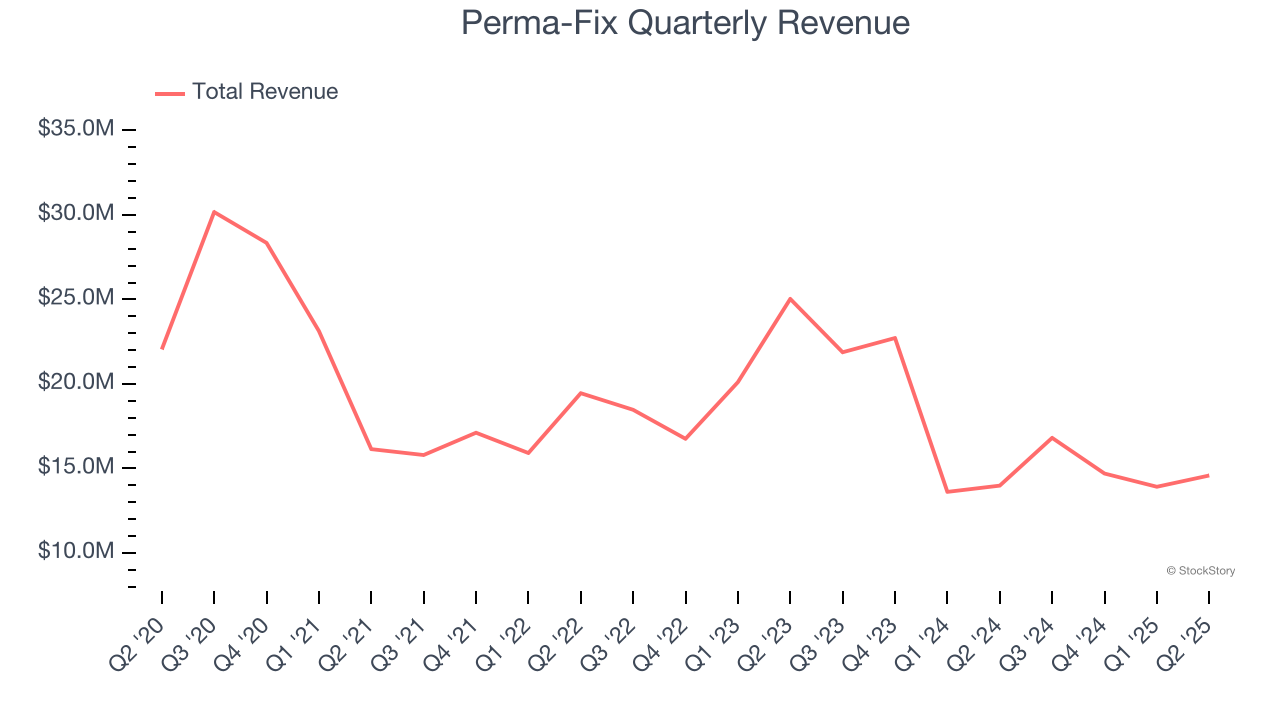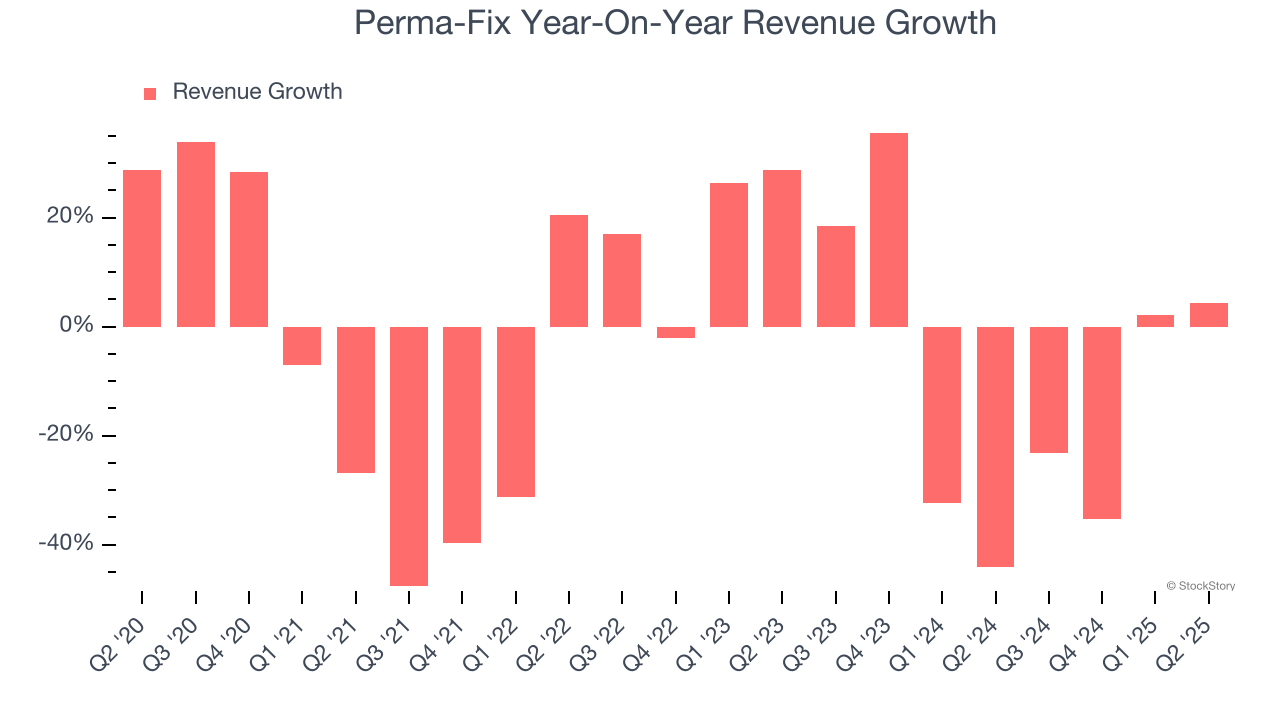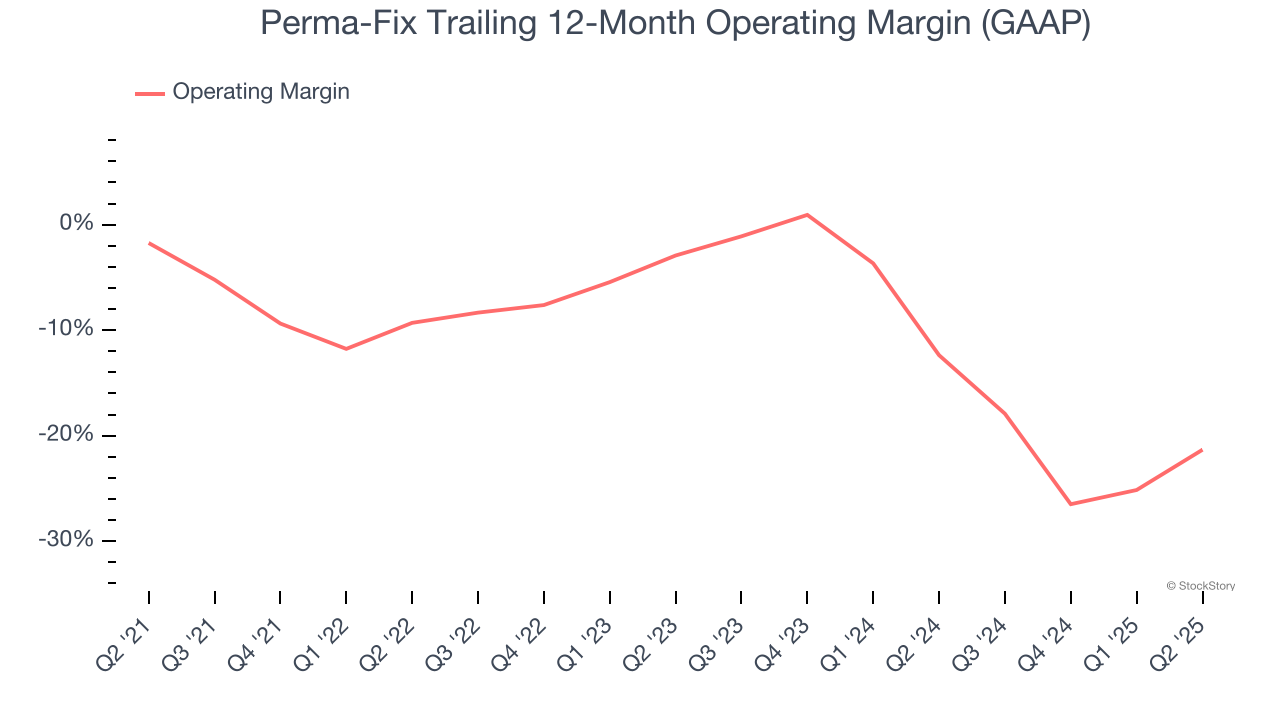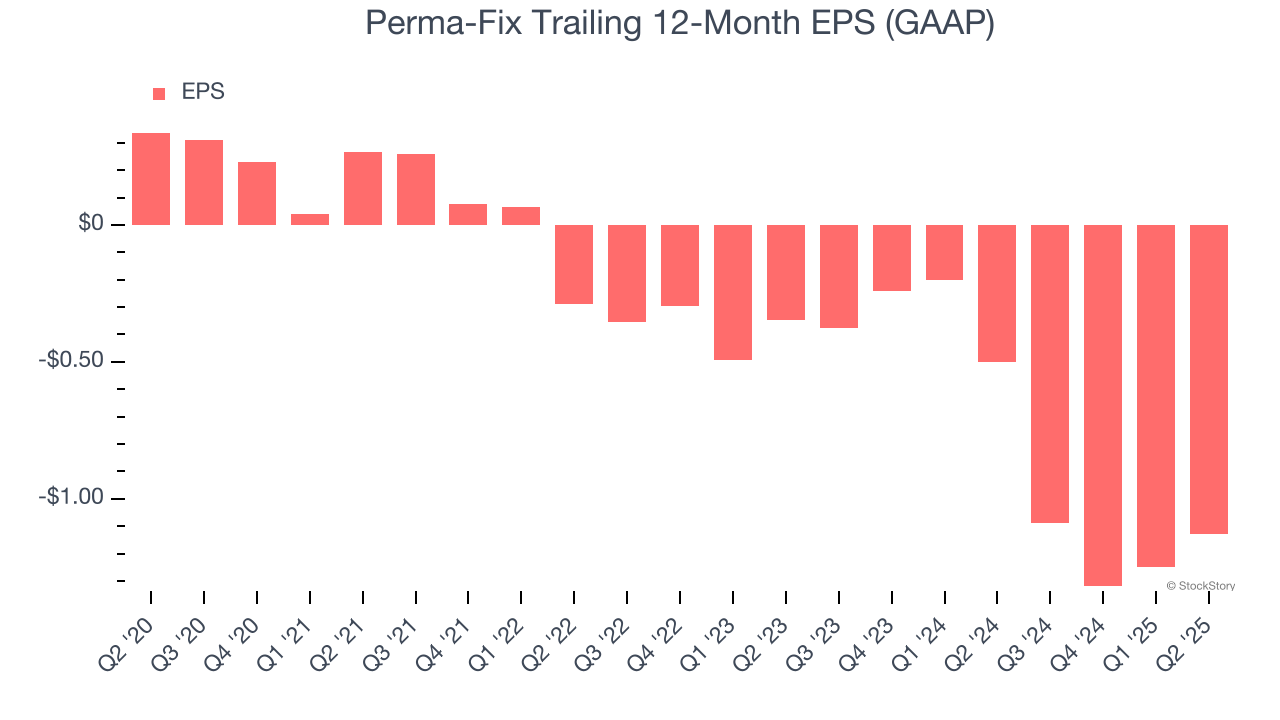
Environmental waste treatment and services provider Perma-Fix (NASDAQ: PESI) fell short of the market’s revenue expectations in Q2 CY2025 as sales rose 4.3% year on year to $14.59 million. Its GAAP loss of $0.15 per share was in line with analysts’ consensus estimates.
Is now the time to buy Perma-Fix? Find out by accessing our full research report, it’s free.
Perma-Fix (PESI) Q2 CY2025 Highlights:
- Revenue: $14.59 million vs analyst estimates of $16.4 million (4.3% year-on-year growth, 11.1% miss)
- EPS (GAAP): -$0.15 vs analyst estimates of -$0.14 (in line)
- Adjusted EBITDA: -$2.3 million vs analyst estimates of -$2.2 million (-15.8% margin, relatively in line)
- Operating Margin: -19.8%, up from -36% in the same quarter last year
- Market Capitalization: $205.4 million
Mark Duff, President and CEO of the Company, commented, “We delivered both sequential and year-over-year revenue growth in the second quarter, accompanied by improved gross margin—reflecting continued progress on our operational initiatives. Treatment Segment revenue increased approximately 37.0% year-over-year, although results were tempered by technical challenges that limited production early in the quarter. We believe that these issues have been resolved through automation and process enhancements, and we expect to realize benefit of these improvements in the second half of the year.
Company Overview
Tackling hazardous waste challenges since 1990, Perma-Fix (NASDAQ: PESI) provides environmental waste treatment services.
Revenue Growth
A company’s long-term performance is an indicator of its overall quality. Any business can have short-term success, but a top-tier one grows for years. Perma-Fix’s demand was weak over the last five years as its sales fell at a 8.1% annual rate. This was below our standards and is a sign of poor business quality.

We at StockStory place the most emphasis on long-term growth, but within industrials, a half-decade historical view may miss cycles, industry trends, or a company capitalizing on catalysts such as a new contract win or a successful product line. Perma-Fix’s recent performance shows its demand remained suppressed as its revenue has declined by 13.6% annually over the last two years. 
This quarter, Perma-Fix’s revenue grew by 4.3% year on year to $14.59 million, falling short of Wall Street’s estimates.
Looking ahead, sell-side analysts expect revenue to grow 65.8% over the next 12 months, an improvement versus the last two years. This projection is eye-popping and implies its newer products and services will catalyze better top-line performance.
Today’s young investors won’t have read the timeless lessons in Gorilla Game: Picking Winners In High Technology because it was written more than 20 years ago when Microsoft and Apple were first establishing their supremacy. But if we apply the same principles, then enterprise software stocks leveraging their own generative AI capabilities may well be the Gorillas of the future. So, in that spirit, we are excited to present our Special Free Report on a profitable, fast-growing enterprise software stock that is already riding the automation wave and looking to catch the generative AI next.
Operating Margin
Operating margin is an important measure of profitability as it shows the portion of revenue left after accounting for all core expenses – everything from the cost of goods sold to advertising and wages. It’s also useful for comparing profitability across companies with different levels of debt and tax rates because it excludes interest and taxes.
Perma-Fix’s high expenses have contributed to an average operating margin of negative 8.5% over the last five years. Unprofitable industrials companies require extra attention because they could get caught swimming naked when the tide goes out. It’s hard to trust that the business can endure a full cycle.
Looking at the trend in its profitability, Perma-Fix’s operating margin decreased by 19.6 percentage points over the last five years. Perma-Fix’s performance was poor no matter how you look at it - it shows that costs were rising and it couldn’t pass them onto its customers.

In Q2, Perma-Fix generated a negative 19.8% operating margin. The company's consistent lack of profits raise a flag.
Earnings Per Share
Revenue trends explain a company’s historical growth, but the long-term change in earnings per share (EPS) points to the profitability of that growth – for example, a company could inflate its sales through excessive spending on advertising and promotions.
Sadly for Perma-Fix, its EPS declined by 39.9% annually over the last five years, more than its revenue. This tells us the company struggled because its fixed cost base made it difficult to adjust to shrinking demand.

We can take a deeper look into Perma-Fix’s earnings to better understand the drivers of its performance. As we mentioned earlier, Perma-Fix’s operating margin expanded this quarter but declined by 19.6 percentage points over the last five years. Its share count also grew by 50.2%, meaning the company not only became less efficient with its operating expenses but also diluted its shareholders. 
Like with revenue, we analyze EPS over a shorter period to see if we are missing a change in the business.
For Perma-Fix, its two-year annual EPS declines of 80% show it’s continued to underperform. These results were bad no matter how you slice the data.
In Q2, Perma-Fix reported EPS at negative $0.15, up from negative $0.27 in the same quarter last year. Despite growing year on year, this print missed analysts’ estimates. Over the next 12 months, Wall Street is optimistic. Analysts forecast Perma-Fix’s full-year EPS of negative $1.13 will reach break even.
Key Takeaways from Perma-Fix’s Q2 Results
We struggled to find many positives in these results. Its revenue missed and its EPS fell short of Wall Street’s estimates. Overall, this quarter could have been better. The stock remained flat at $11.20 immediately following the results.
So should you invest in Perma-Fix right now? The latest quarter does matter, but not nearly as much as longer-term fundamentals and valuation, when deciding if the stock is a buy. We cover that in our actionable full research report which you can read here, it’s free.






